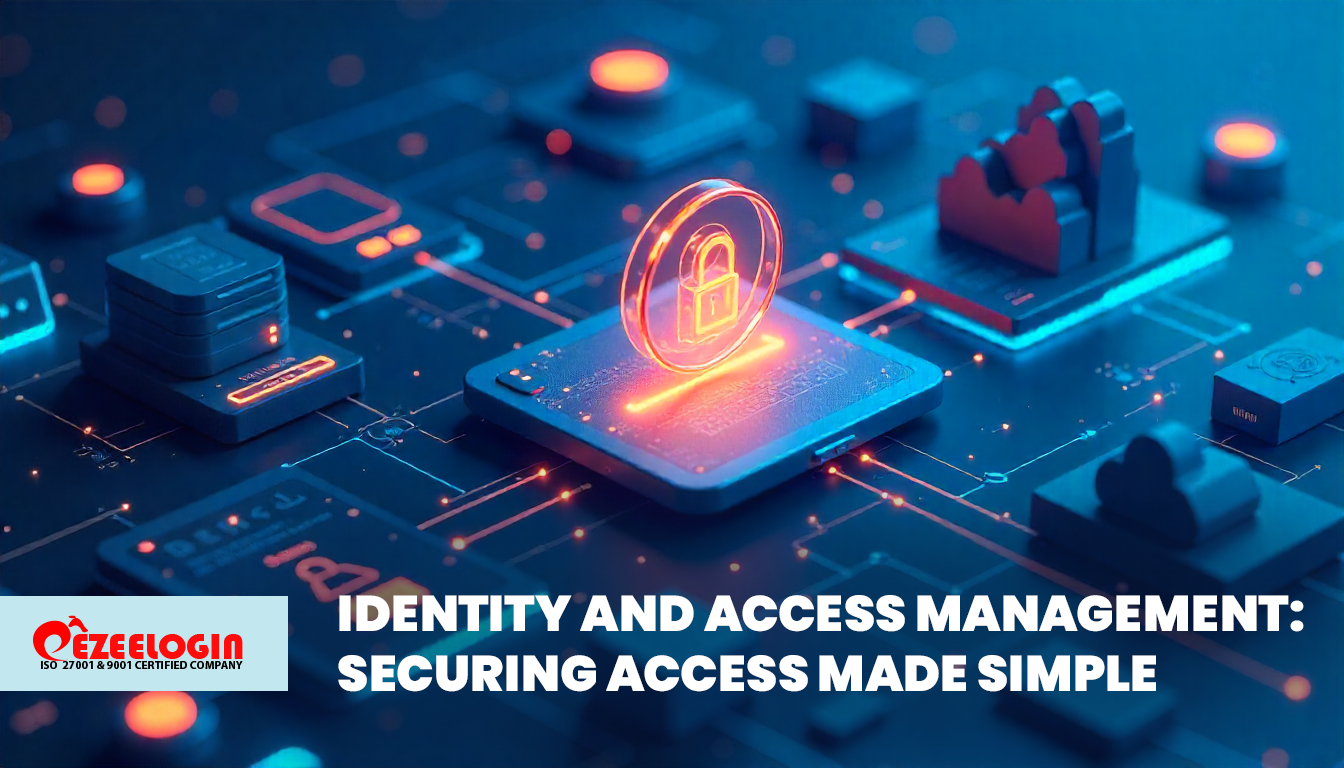In this digitally first world, organizations interacts with a large number of users everyday, whether it being customers, partners, employees or contractors with most of them needing safe access to the confidential systems and data. It is very difficult to manage this access manually, which is where the Identity and Access management comes into play.
Management of log in and log out is not the only aspect of IAM. Ensuring the right people having the right access to the right resources at right time, ensuring stronger security, better compliance, improved user experience and lower administrative overhead are all benefits of a well-designed IAM system.
What is Identity and Access Management (IAM)?
A framework called Identity and Access Management (IAM) helps businesses to:
• Identify users: Confirm an individual’s identity (authentication).
• Manage access: Determine which resources they are authorized to use.
• Activity monitoring: Keep tabs on, examine, and assess user conduct.
Fundamentally, IAM keeps unauthorized users out of the system and guarantees that only authorized users, whether they be clients, staff, or outside partners can access the resources they require.
For instance:
• A consumer using an ecommerce website receives tailored access to their account but not to anybody else’s.
• A remote worker joining into the corporate network is only allowed access to work-related systems and not to private HR or financial data.
This balance of security and accessibility is what makes IAM so critical.
Why is Identity and Access Management (IAM) Important?
Due to the move towards cloud services, remote work/work from home and digital collaboration, IAM has emerged as a key component of the businesses
cybersecurity and compliance strategies.
Some key reasons why IAM is essential include:
1. Security Hardening
* Prevents unauthorized access, reduces risks of cyberattacks, data breaches
and insider threats.
* Enforces Multi Factor Authentication (MFA) and least privilege access policies.
2. Regulatory Compliance
* Regulations like GDPR, HIPPA and ISO 27001 require organizations to control
and audit access.
* IAM helps in providing reporting and governing tools needed for compliance.
3. Enhanced user Experience
* Simplifies access using features like Single Sign-On.
* Reduces password fatigues for users by reducing the number of credentials they must remember.
4. Remote work and Cloud Adoption
* With remote work employees acres data from anywhere and IAM ensures secure and seamless access.
5. Operational Efficiency
* IAM aids in automation of provisioning and de-provisioning of accounts when an employee joins, move or leave the company.
* IAM helps in saving IT administrators from repetitive tasks while reducing errors.
Key Components of IAM
IAM is built on several key components that work together to secure digital access:
- Authentication: Verifying who the user is (e.g., passwords, biometrics,
MFA). - Authorization: Determining what they are allowed to do (e.g., access
policies). - User Lifecycle Management: Managing user accounts from
on-boarding to off-boarding. - Access Governance: Tracking, auditing, and ensuring compliance.
- Privileged Access Management (PAM): Adding extra security for highlevel accounts like system admins.
Types of Identity and Access Management (IAM)
IAM is not one-size-fits-all. Different IAM solutions and approaches exist depending on organizational needs.
Let’s look at the most common types of IAM:
- Single Sign-On (SSO)
Definition:
Single Sign -On (SSO) allows users to login once and gain access to multiple systems without needing to re-enter credentials.
Example:
If you are logged into your Google Account, you can access other Google
Services like Gmail, Google Drive, Youtube etc. without the need to sign in again. Benefits:
- Reduces password fatigue for users.
- Improves productivity with faster logins.
- Lowers IT costs by minimising password reset requests.
2. Multi-Factor Authentication (MFA)
Definition:
MFA adds extra layers of verification beyond just a username and password.
MFA requires two or more factors:
• Something you know (password).
• Something you have (smartphone, token).
• Something you are (biometrics like fingerprint/face).
Example:
When logging into your bank account, after entering your password, you may receive a one-time OTP on your mobile.
Benefits:
• Provides stronger protection against credential theft.
• Reduces the risk of phishing and brute force attack
3. Privileged Access Management (PAM)
Definition:
PAM is a specialized IAM solution focused on protecting accounts with elevated access—like administrators, developers, or IT staff.
Example:
A system administrator may have access to the entire company server. PAM tools limit when and how these accounts can be used, often requiring just-in-time access approvals.
Benefits:
• Reduces insider threat risks.
• Prevents misuse of powerful admin accounts.
• Provides detailed audit trails.
4. Identity Federation
Definition:
Federation allows users to access multiple applications across different organizations using a single set of credentials. It relies on trust between identity providers (IdP) and service providers (SP).
Example:
When you use your Facebook or LinkedIn account to log in to third-party apps or websites.
Benefits:
• Simplifies cross-organization access.
• Reduces the need to manage multiple accounts.
5. Role-Based Access Control (RBAC)
Definition:
Access is granted based on the role of the user within the organization.
Example:
• HR staff can access payroll systems but not engineering tools.
• Developers can access code repositories but not financial systems.
Benefits:
• Enforces the principle of least privilege.
• Simplifies access management in large organizations.
• Provides a clear, structured model for assigning permissions based on well-defined roles (e.g., HR, Developer, Manager).
6. Attribute-Based Access Control (ABAC)
Definition:
Access is granted based on attributes such as user role, department, location, device, or time.
Example:
A doctor in a hospital may access patient records only during work hours and only from authorized hospital devices.
Benefits:
• Provides fine-grained, context-aware access control.
• Adapts to dynamic business needs better than RBAC.
• Supports more flexible policies by evaluating multiple attributes (role, device, location, time).
• Complements or extends RBAC by allowing dynamic conditions instead of only static roles.
7. Customer Identity and Access Management (CIAM)
Definition:
CIAM is tailored to managing and securing customer identities, ensuring smooth yet secure digital experiences for end-users.
Example:
E-commerce platforms use CIAM to let customers log in, store payment details, and manage preferences securely.
Benefits:
• Enhances customer trust with secure transactions.
• Supports large-scale scalability for millions of users.
• Provides insights into customer behavior.
Best Practices for Implementing IAM
- Adopt Least Privilege Access – Give users the minimum permissions
they need. - Use Multi-Factor Authentication (MFA) – Don’t rely solely on
passwords. - Automate Provisioning and De-Provisioning – Immediately revoke
access when employees leave. - Monitor and Audit Regularly – Track who accessed what and when.
- Educate Users – Train employees to recognize phishing and use secure practices.
- Integrate with Cloud and On-Prem Systems – Ensure IAM works across hybrid environments.
Conclusion
In a world where cyber threats are evolving rapidly, Identity and Access Management (IAM) has become an essential pillar of cybersecurity. From improving security and compliance to enabling seamless user experiences, IAM is critical for every organization, regardless of size. Whether through SSO for convenience, MFA for stronger protection, PAM for privileged accounts, or CIAM for customer engagement, IAM offers a wide range of solutions tailored to specific needs.
By adopting a strong IAM strategy, organizations can confidently embrace digital transformation, safeguard sensitive data, and empower users with secure, friction less access.







